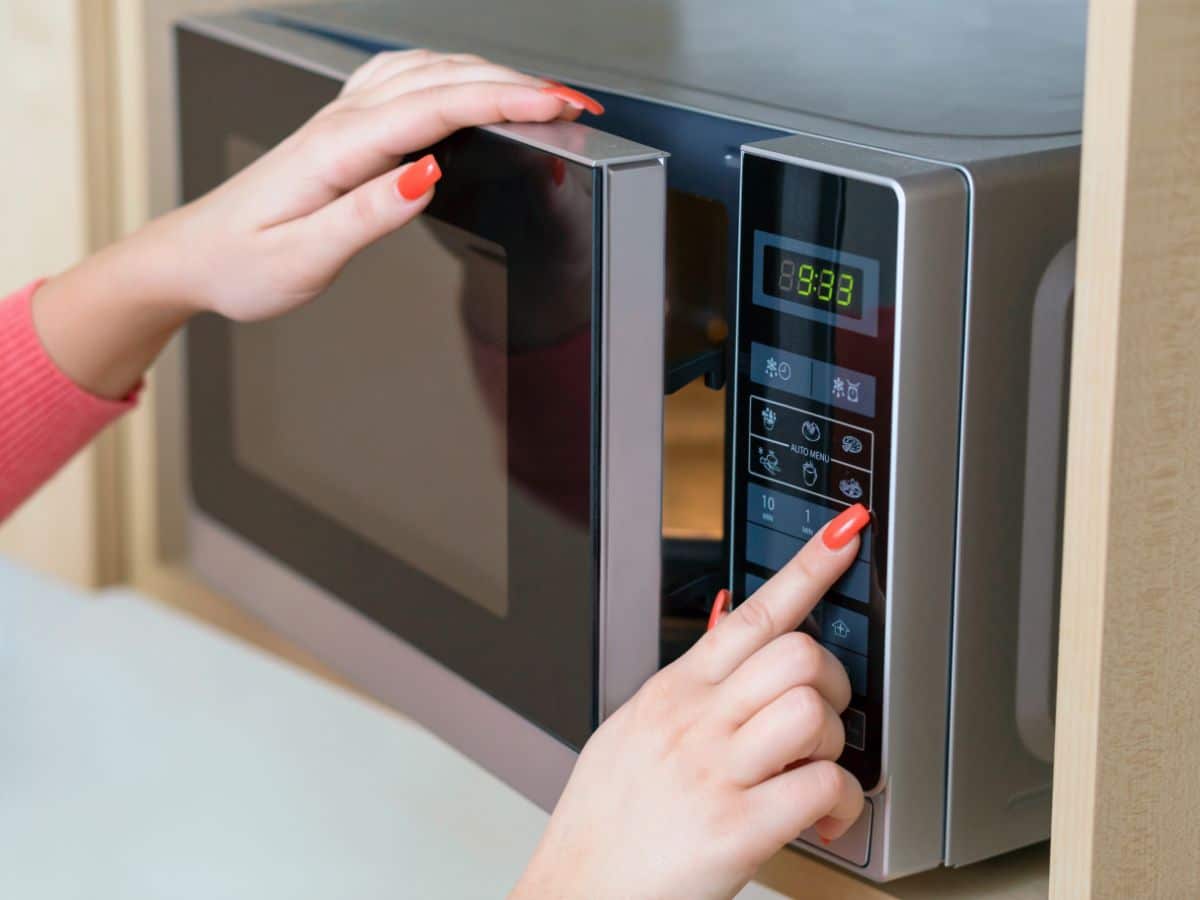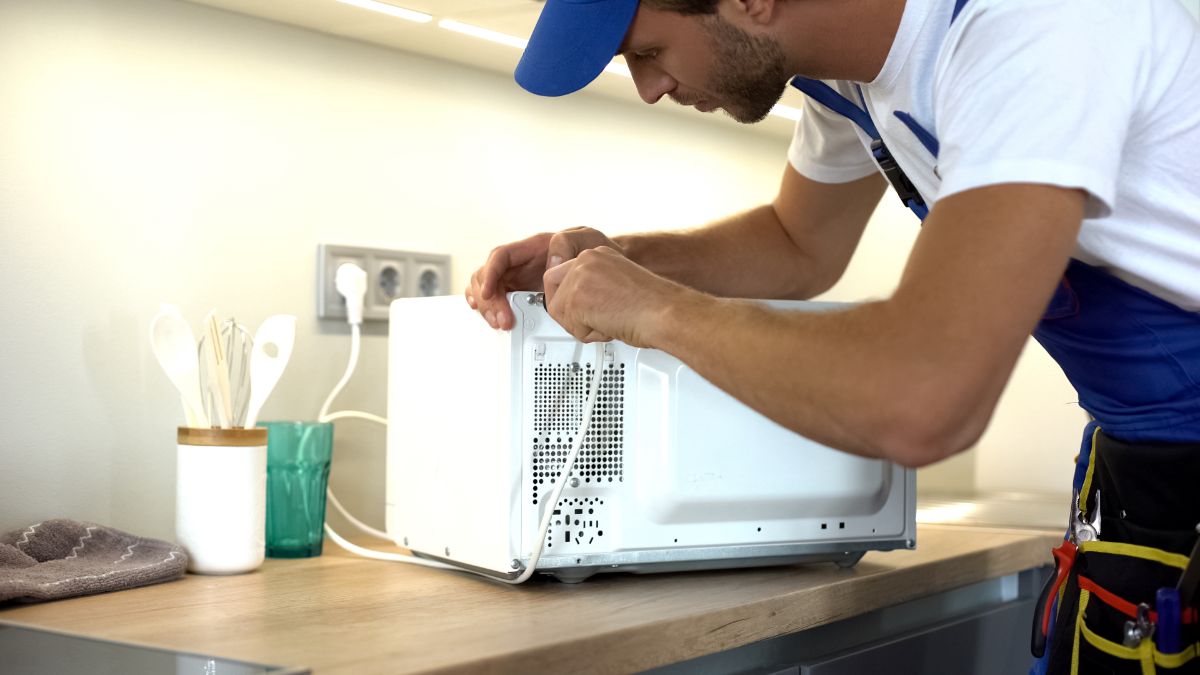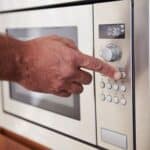Microwaves are a staple in most households, doing cooking and reheating food a breeze. However, like all appliances, microwaves can malfunction and stop working. We will review nine reasons why your microwave may have stopped working and how to fix them.

Jump to:
9 Reasons Your Microwave Stopped Working
There are several reasons why your microwave might have stopped working. Before reviewing possible solutions, we will examine the reasons for microwave failure.
Some reasons why the microwave isn't running include the following:
- Power cord: If the power cord is damaged, the microwave will not receive power and will not turn on. To test the power cord, inspect it for any fraying or damage. If the cord is damaged, it will need to be replaced.
- Microwave door: The appliance won'twon't turn on if the microwave'smicrowave's door isn'tisn't securely closed and the switch isn'tisn't securely connected.
- Microwave door switch: There might be a problem with the door switch or the microwave door itself. Because of this, you should never slam the door of a microwave oven since doing so might cause the switch to become permanently damaged.
- Power outage: If there has been a power outage in your area, your microwave may not turn on. Check whether the power outlet is working and whether the circuit breaker has tripped. If the power outlet is working, try plugging in another appliance to ensure the outlet is not faulty.
- Control panel: If the front control panel is not functioning properly, the microwave will not work. This could be due to a malfunctioning touchpad or a faulty control board. To test the control panel, try pressing different buttons to see if they respond. If the control panel is not responsive, it will need to be replaced.
- Diode: The diode converts the AC power to DC power, which is needed for the microwave to function.
- Magnetron: The magnetron is the component that generates microwaves. If it is faulty, the microwave will not heat.
- Wave guide cover: The cover prevents food from getting inside the microwave's electrical components. If it is damaged, the microwave will not work properly. To test the waveguide cover, inspect it for any damage or food debris.
- Fuse: The fuse acts as a safety device to protect the microwave from electrical damage. If the fuse is blown, the microwave will not turn on.
In some cases, it may be more cost-effective to replace the microwave rather than repair it. However, by identifying the problem and fixing it, you can save money and prolong the life of your appliance.
How Do You Fix a Microwave That Won't Turn On?

If your microwave won't turn on, here are a few troubleshooting steps you can try:
- Check the power source: Ensure the microwave is plugged in and the outlet is working. Try plugging another device into the outlet to ensure that it is providing power.
- Check the door: Ensure the door is closed and the switch is functioning properly. If the door switch malfunctions, the microwave will not turn on.
- Check the control panel: Make sure that the control panel is not locked and that all buttons are functioning properly. If the control panel is locked, consult the user manual for instructions on how to unlock it.
- Check the fuse: The fuse might be blown. Check for a blown fuse in the control panel or near the power cord of the microwave.
If these troubleshooting steps don'tdon't resolve the issue, it's best to call a professional technician to inspect further and repair the microwave. Remember that attempting to fix a microwave can be dangerous, so it's always recommended to call a professional if you need help with how to proceed.
Is There a Reset Button on Microwaves?
Many microwaves do not have a specific reset button. However, the "Off/Clear" button or "Stop/Cancel" button can often reset the microwave and clear any error messages or settings.
This button is typically located on the control panel and can stop or clear a cooking cycle and any error codes or messages that it may display on the screen.
How To Do a Soft Reset on Microwaves

A soft reset on a microwave is a way of restarting the microwave without completely shutting it off and unplugging it. It'sIt's a way of clearing any errors or glitches that the microwave may have encountered and getting it back to its normal operation without having to go through the process of unplugging and plugging the device again.
Use the "Off/Clear" or "Stop/Cancel" button to perform a soft reset on a microwave. It may return the microwave to its normal operation.
How Do I Know If My Microwave Fuse is Blown?
Most microwaves include several fuses for added safety. Door fuses that prevent microwaves from escaping will be tripped if the door isn't shut tightly enough. The microwave has thermal fuses that will blow if it gets too hot.
The fuse will also trip if an electrical surge threatens to produce a short circuit. When the microwave's high-voltage capacitor shorts out, it might cause the fuse to blow upon initial operation.
Looking at the microwave is one way to see if the fuse has blown. A blown fuse is most often the cause of a nonworking or nonresponding microwave.
The breaker box is another option. The microwave's fuse has probably blown if the circuit breaker has been triggered.
In Review

There are various reasons why a microwave may stop working. The most common causes include a blown fuse, a malfunctioning door switch, or a failed diode. Other potential issues include problems with the control board, a faulty transformer, or a broken magnetron.
If the microwave is not working, it's important to check if it's getting power and then troubleshoot the issue by checking the user manual or consulting a professional repair technician. Identifying and fixing the problem as soon as possible is important to prevent further damage and ensure safe operation.




